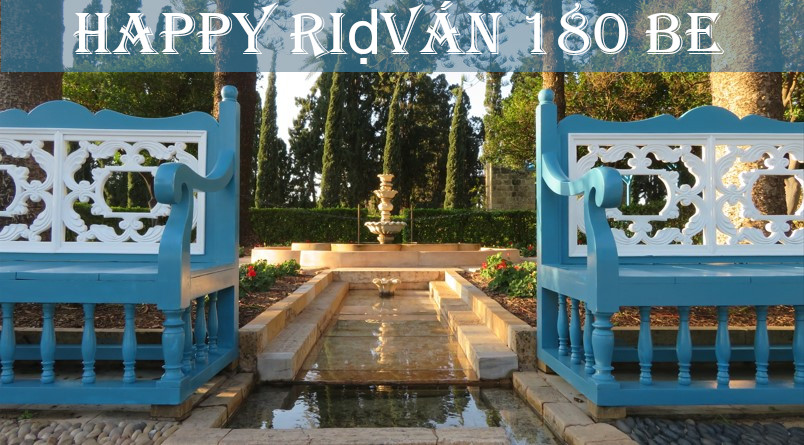The Great Festival of Ridván stands as a pivotal observance within the Bahá’í Faith, embodying both spiritual significance and a deep-rooted cultural heritage. This festival, often referred to as the “King of Festivals,” spans twelve days from April 21 to May 2, commemorating the declaration of Bahá’u’lláh as the Manifestation of God for this age. The multifaceted nature of Ridván invites both Bahá’ís and interested observers to delve into its profound meanings, rituals, and the universal values it espouses.
One observes that the magnificence of Ridván lies not solely in its historical context but also in the transformative potential it holds for individual and collective spirituality. At its inception, Bahá’u’lláh declared His mission during His exile to the Bosnian town of Ridván; this event marks the genesis of a new epoch in religious history. Thus, Ridván serves as a microcosm of hope and a promise of divine guidance—a celebration heralding the dawn of a new era.
To explore the essence of Ridván, it is imperative to comprehend the intricate symbolism embedded within its practices. Visually, the festival is adorned with stunning colors, particularly the radiant hues of gardens, emblematic of paradise. This vibrant imagery emphasizes the Bahá’í belief in the unity of humanity and the potential for an equitable and just world. Participants often congregate in gardens and natural settings to reflect upon the bounties of creation, embodying the principle of connection to the divine through the natural world.
One noteworthy aspect of Ridván is the emphasis on community and fellowship. The festival is not merely a private observance; it engenders gatherings that reinforce the communal aspect of the Faith. Bahá’ís around the globe host exquisite celebrations, encouraging unity among diverse populations. These gatherings foster a sense of belonging and a shared commitment to the tenets of peace and cooperation, underscoring the exhortations of Bahá’u’lláh to promote love and inclusivity among all peoples.
Moreover, Ridván is characterized by specific rituals that further enhance its spiritual ambiance. During this period, the observance of holy days occurs, with the first, ninth, and twelfth days bearing special significance. Each of these days is marked by prayers, communal prayers, and joyous gatherings, where the Bahá’í community comes together to invoke blessings from the Almighty. The practice of offering hospitality during this season symbolizes the guest-focused tradition inherent in Bahá’í culture, reflecting a heartfelt invitation for all individuals to partake in spiritual joys.
As the festival unfolds, a striking feature of Ridván is the proclamation of candidates for administrative positions within the Bahá’í community. This serves as a tangible demonstration of the democratic principles that the Faith espouses. The elections that occur during this period allow for the participation of community members in shaping the governance of their spiritual affairs. This democratic engagement signifies the commitment to consultative decision-making, highlighting the Bahá’í tenet that every voice matters in the collective journey toward a just society.
The underlying spiritual themes of Ridván resonate with the notion of renewal and rebirth. The festival acts as a temporal oasis wherein individuals are encouraged to reflect on their personal journeys and recommit to their spiritual practices. The sight of freshly bloomed flowers during this period serves as a metaphor for spiritual renewal—a reminder of the transformative power inherent in the individual’s quest for enlightenment. The vivid gardens symbolizing paradise evoke a heartfelt longing for a harmonious existence, mirroring the aspirations of the Bahá’í Faith for a peaceful and unified world.
Further enriching the festival is the emphasis on the concept of individual transformation. Ridván is not just a historical commemoration; it urges adherents to reflect on their inner realities and strive toward self-improvement. Each Bahá’í is called to examine their contributions to society and engage in acts of service that promote the welfare of humanity. The festival thus serves as a catalyst for social change, embedded within the fabric of spiritual devotion and ethical conduct. This tenet emphasizes the Bahá’í belief that true progress emerges from the intersection of spirituality and action.
The allure of Ridván also stems from its global celebration. No matter where a Bahá’í is located, they join with others across continents, creating a tapestry of diversity united in purpose and belief. This global phenomenon attests to the universality of the principles espoused by Bahá’u’lláh. When one observes, there is a palpable sense of solidarity that transcends cultural and geographical barriers. This interconnectedness contributes to the fascination surrounding Ridván, as individuals witness, firsthand, the powerful communal bonds formed through shared beliefs and objectives.
Cognizantly, Ridván can be viewed as a microcosm of the Bahá’í journey, inviting practitioners and onlookers alike to ponder profound questions about existence, purpose, and the nature of divine guidance. As the festival inspires individuals to dream of a future where unity, justice, and love prevail, one can perceive it as an invitation to engage deeply with one’s own spiritual path. The festival is a reminder that, indeed, paradise can be manifested on Earth through collective efforts, bound together by an unwavering commitment to the principles of oneness, equity, and service to humanity.
In conclusion, the Great Festival of Ridván is far more than a commemorative event; it encapsulates a worldview rooted in love, unity, and the ideal of a just society. As observers reflect on its spiritual significance and communal celebrations, they may uncover the deeper reasons for their fascination. In essence, Ridván invites all to envision a more harmonious world—a world that not only celebrates diversity but recognizes it as the cornerstone of collective human experience.
